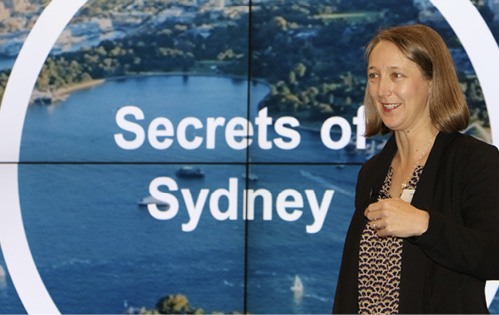
By Jacqui Douglas, Australian Institute for Disaster Resilience
100 Resilient Cities, pioneered by the Rockefeller Foundation (100RC) is dedicated to helping cities around the world become more resilient to the physical, social and economic challenges that are a growing part of the 21st century.1
Since selection for 100RC in 2014, Sydney has been active in the development of its first resilience strategy with Chief Resilience Officer Beck Dawson at the helm. Between sessions at AFAC17, Beck Dawson shared insights with AIDR about the experience thus far and her vision for a more connected city.
In 2016, Resilient Sydney—a metropolitan collaboration of councils hosted by the City of Sydney—released its Preliminary Resilience Assessment. This was the first step in a three-phase process to implement a resilience strategy. Beck Dawson outlined the 100RC dichotomy of shocks and stresses; ‘the acute things that would stop the city [and] those longer, slow-burning issues.’ The published assessment outlines ‘short-term disruptions’ ranging from extreme weather to the failure of digital and infrastructure networks. Among the stresses are more complex, systemic issues such as transport diversity, housing affordability and social cohesion.2
In particular, the evidence demonstrates the importance of social cohesion; in Beck Dawson’s words, ‘the single biggest determinant for recovery of big cities.’ She boils down the global experience of 100RC to the fundamental realisation that cities are ‘for, by and made of people,’ and asserts that interconnectedness within communities is a greater protective factor than financial resources or even forward-planning at the individual level. Social cohesion also emerged in public engagement work as a key community priority, particularly given the proliferation of dense, vertical communities in Sydney.
Other community priorities include governance and inclusive decision-making. Beck Dawson emphasises the depth of understanding within communities about the importance of resilience, as well as their knowledge of city connectedness relative to experts, influencers and city operators. In light of the global 100RC experience, she recognises the need to develop a robust governance model connecting the layers of government with community and business supports that provides a clearer picture of both risks and possible solutions.

Beck Dawson is eager to build on existing alignment of vision with Sydney’s booming private sector, affirming the readiness of business players to understand and manage their risks going forward, and to assume a meaningful role in the city’s resilience strategy. Again, a seat at the table is vital for the private sector contribution to a joined-up strategy.
For Sydney, the next steps reflect the need to work at both a community and city scale. At the local level, that means programs that support councils to better involve their communities. More broadly, Beck Dawson outlines opportunities for structural and strategic approaches to resilience, such as mapping escape routes in response to a range of different hazards.
Ultimately, the experience is one of global learning and local application. Beck Dawson urges honesty in appraising the reality of the shocks and stresses: ‘We’re not immune to those issues, they are real here too…let’s have that frank discussion. We’ll all be better prepared as a result,’ she said.
1 100 Resilient Cities, About Us. At: http://100resilientcities.org/about-us/.
2 Resilient Sydney Preliminary Resilience Assessment 2016. At: www.cityofsydney.nsw.gov.au/__data/assets/pdf_file/0005/263975/2016-503932-Report-Resilient-Sydney-PRA-FINAL-ISSUED.pdf.